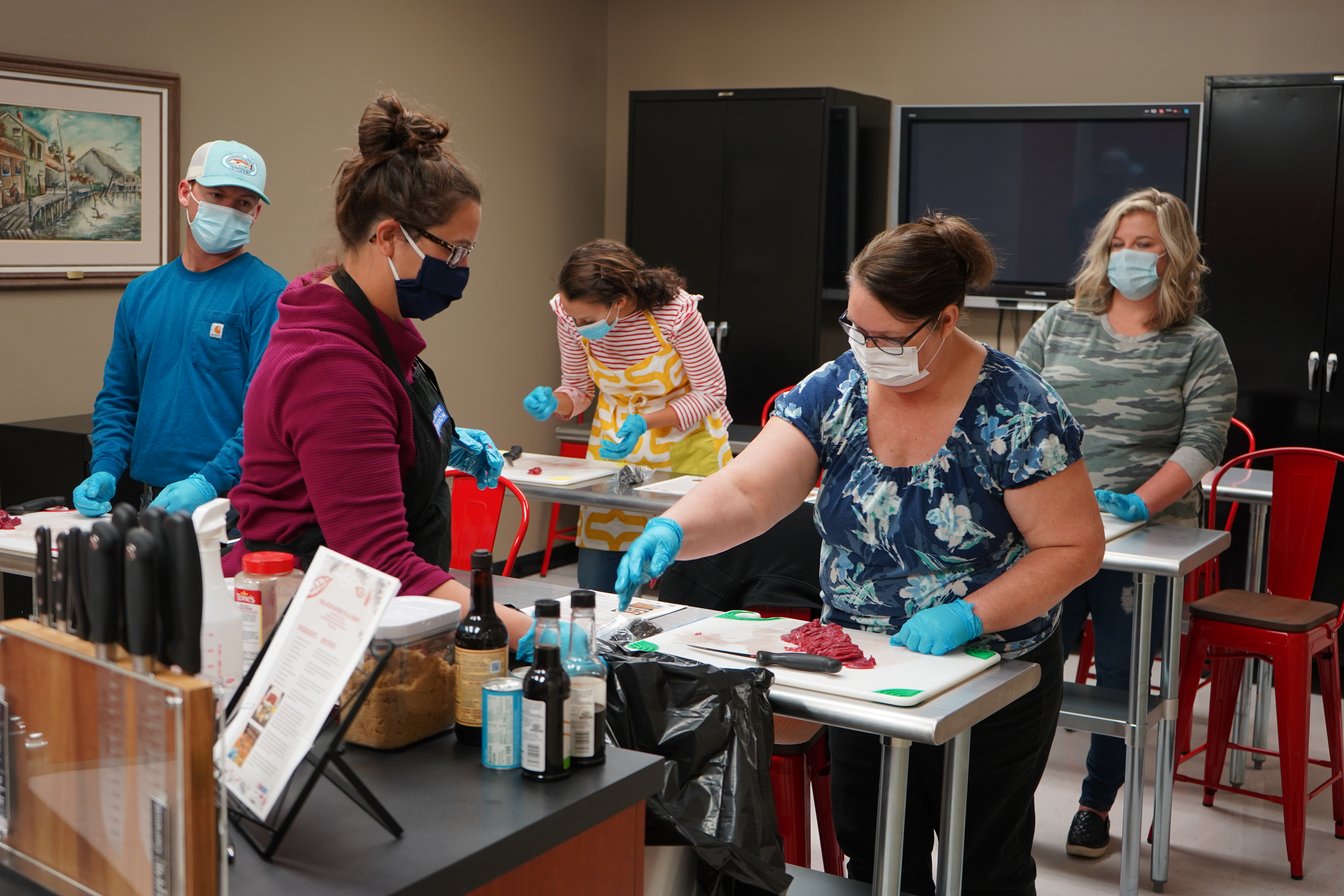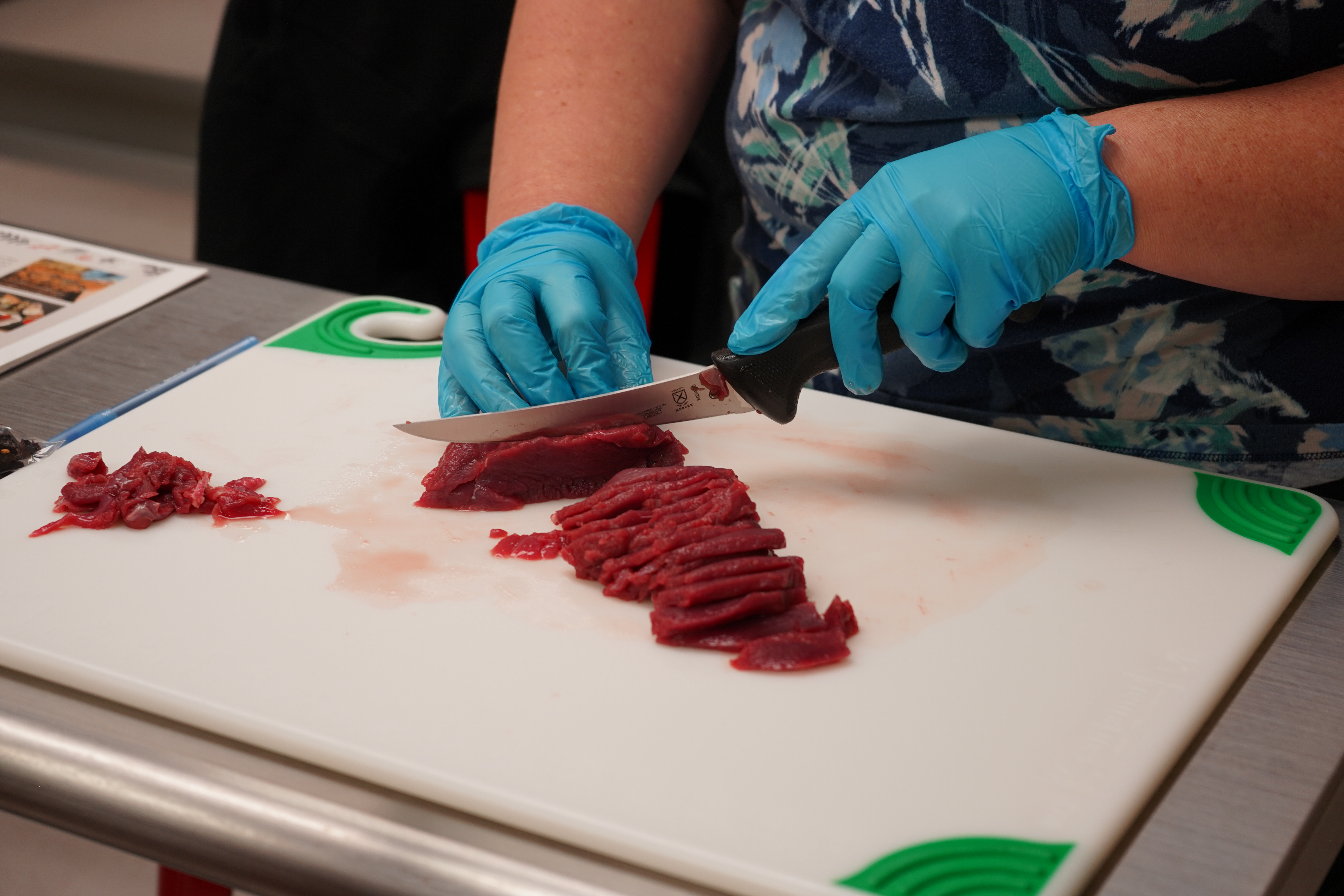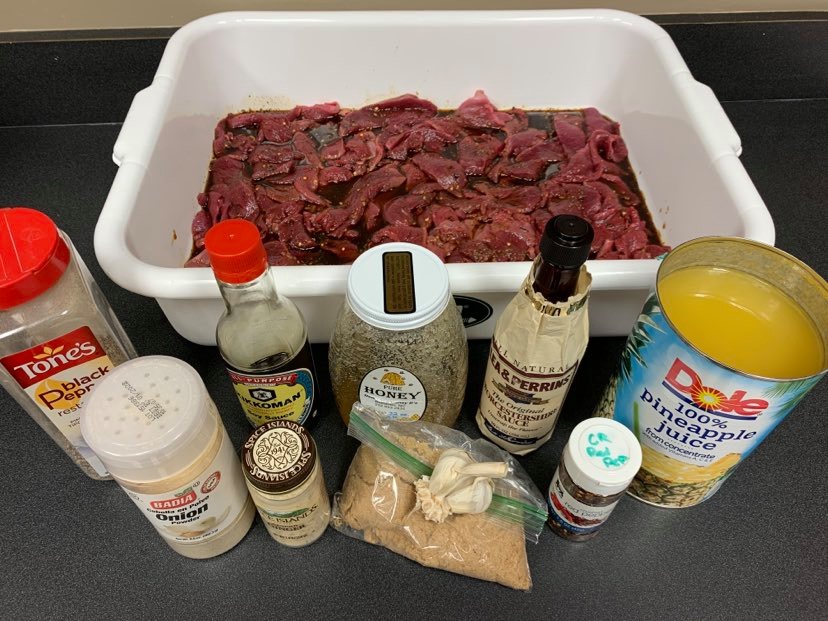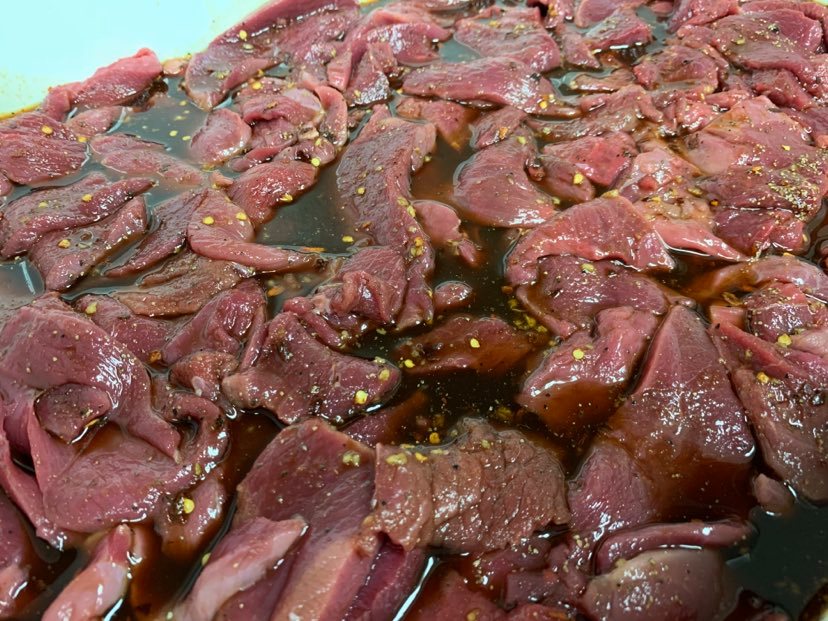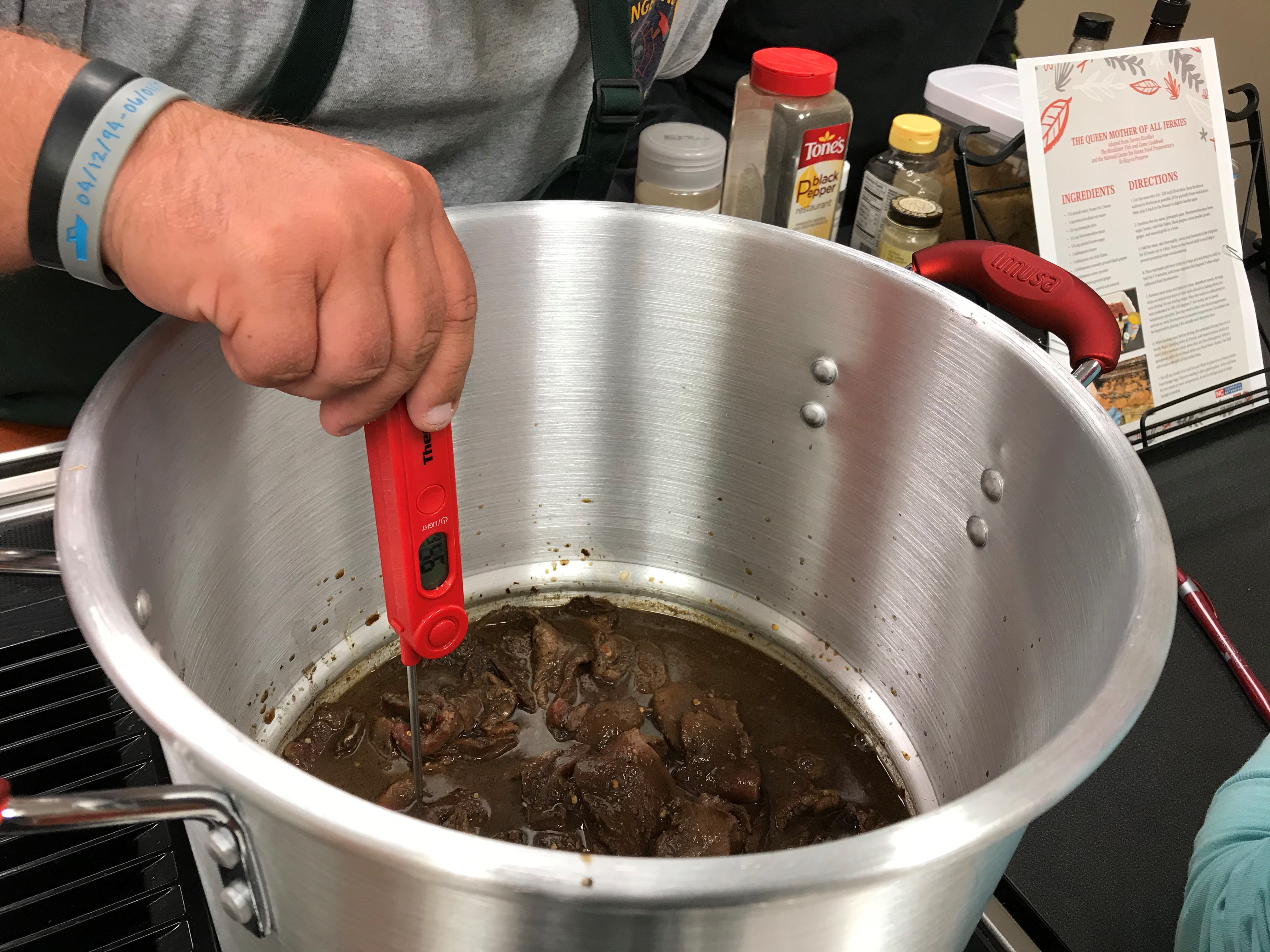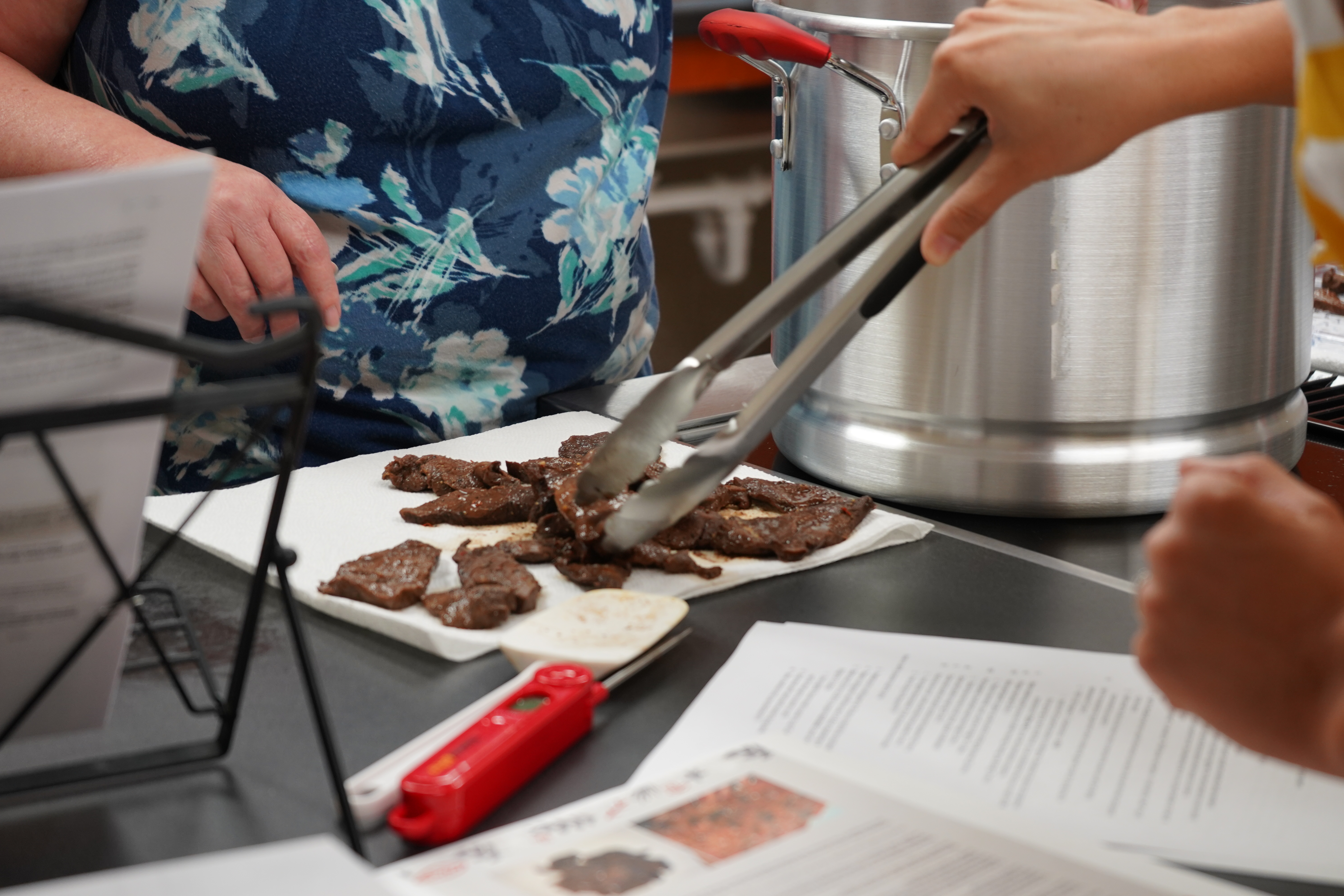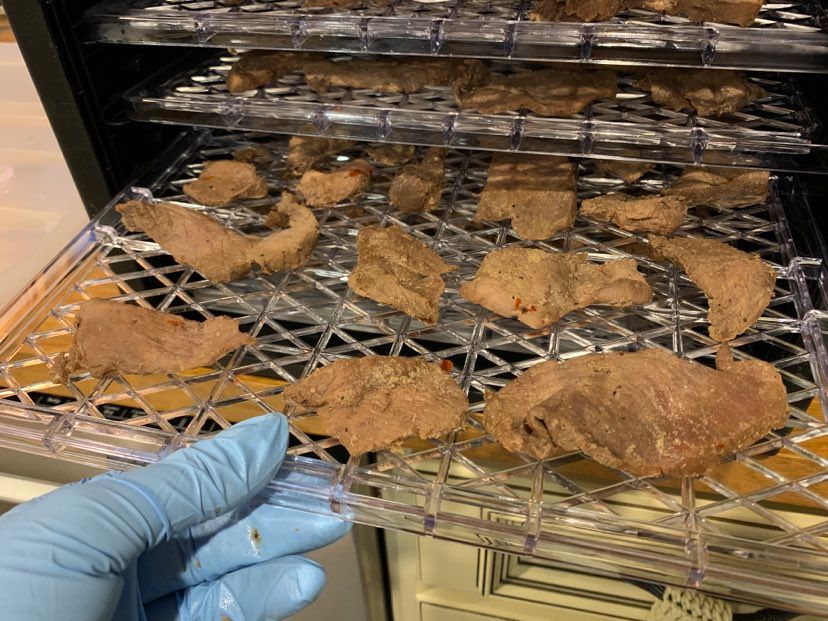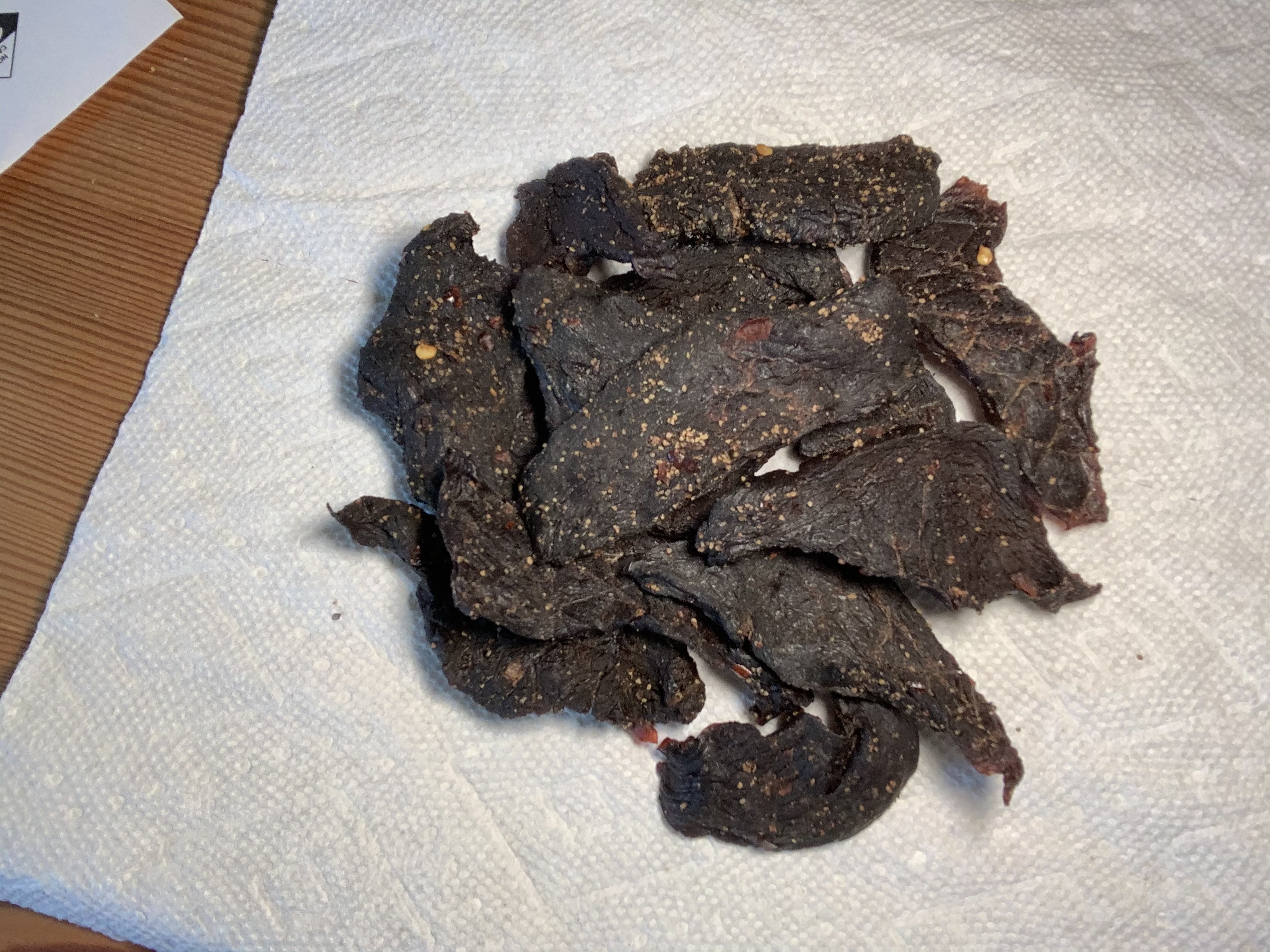Venison Jerky – Dehydrating Meat: Tips, Safety, & Recipe
go.ncsu.edu/readext?756114
en Español / em Português
El inglés es el idioma de control de esta página. En la medida en que haya algún conflicto entre la traducción al inglés y la traducción, el inglés prevalece.
Al hacer clic en el enlace de traducción se activa un servicio de traducción gratuito para convertir la página al español. Al igual que con cualquier traducción por Internet, la conversión no es sensible al contexto y puede que no traduzca el texto en su significado original. NC State Extension no garantiza la exactitud del texto traducido. Por favor, tenga en cuenta que algunas aplicaciones y/o servicios pueden no funcionar como se espera cuando se traducen.
Português
Inglês é o idioma de controle desta página. Na medida que haja algum conflito entre o texto original em Inglês e a tradução, o Inglês prevalece.
Ao clicar no link de tradução, um serviço gratuito de tradução será ativado para converter a página para o Português. Como em qualquer tradução pela internet, a conversão não é sensivel ao contexto e pode não ocorrer a tradução para o significado orginal. O serviço de Extensão da Carolina do Norte (NC State Extension) não garante a exatidão do texto traduzido. Por favor, observe que algumas funções ou serviços podem não funcionar como esperado após a tradução.
English
English is the controlling language of this page. To the extent there is any conflict between the English text and the translation, English controls.
Clicking on the translation link activates a free translation service to convert the page to Spanish. As with any Internet translation, the conversion is not context-sensitive and may not translate the text to its original meaning. NC State Extension does not guarantee the accuracy of the translated text. Please note that some applications and/or services may not function as expected when translated.
Collapse ▲Your deer season is going great and now you are looking for a new way to preserve or prepare your venison. Let’s talk about dehydrating meat and a recipe option for venison jerky!
Did you know that wild game should be frozen for 30 days in order to kill various potential parasites in the meat? While freezing does not kill bacteria that causes foodborne illness like E. Coli or Salmonella, it will help to kill parasites like Trichinella and Toxoplasmosis gondii that cause Trichinellosis and Toxoplasmosis, respectively. In order to kill bacteria, your meat should be heated to 165 degrees F. These may be big words, but know that freezing your wild game and then heating it will greatly reduce the likelihood of contracting a foodborne illness or parasitic infection. We’ll outline two ways to heat jerky meat below. While drying will stop the growth of bacteria, it will not kill off what may already be present.
Food Safety and Hygiene
Before we begin, let’s review some food safety and hygiene information to make sure foodborne illness does not make an unwelcome visit.
- Wash your hands with soap and water and scrub for at least 20 seconds before rinsing.
- Wear disposable gloves when handling raw wild game, in the field and in the kitchen.
- Wash and sanitize all food contact surfaces. Remember that cleaning = brushing your teeth. Sanitizing = using mouth wash
- Clean visible residue off contact surfaces with soap and hot water. Make sure all the soap is rinsed off, and then sanitize with a 50-50 solution of bleach and water. Leaving soap suds on your surfaces can reduce the effectiveness of the bleach. Yes, this is a significantly higher concentration than the recommended ratio listed on your bleach. A 50-50 solution is recommended to help sanitize against potential Chronic Wasting Disease, which can be a disease found in deer.
- Let the bleach water solution remain wet on your surfaces for as long as is recommended on your specific bottle of bleach. This often ranges from 1-10 minutes. Read the label to determine your specific contact time. If it begins to dry, spray again until it is moist, until it reaches that contact time. If you are using a cloth to sanitize, you must continue wiping that surface for the full length of the listed time.
- An open bottle of bleach is effective for about 30 days.
- A solution of bleach and water is effective for about 1 day. Filling a spray bottle and using it three weeks later will not effectively sanitize.
- A sharp knife is safer than a dull knife blade. Cutting through a lot of fat can dull your knife blade quickly! Be sure you have some form of knife sharpener to help keep it sharp and slicing easily, and not slipping, which could increase your chance of cutting yourself.
- Dispose of marinade when complete. Do not reuse it.
- Jerky can be placed in glass jars or heavy, plastic food bags. Vacuum sealing is also a good option. It can remain at room temperature for up to two weeks, if it lasts that long! If you need longer storage, place in your refrigerator.
Prepping Your Venison for Jerky
- Ensure your fresh harvest has been quickly and properly cooled after field dressing (under 41 degrees F).
- Decide which cuts of meat you plan to use for jerky. Hams and shoulders are common choices, but you can use any meat safely harvested. Once you have chosen that, trim all fat and silver skin off the meat. This is especially important for jerky and helps to remove some of the gamey flavor. Cut them to no more than 6 inches thick to help kill potential parasites and place in freezer safe paper or heavy, plastic food storage bags.
- Freeze your wild game for 30 days to help kill potential parasites.
- Begin the thawing process! There are a couple thawing methods that are safe for making jerky.
- Place in the refrigerator to thaw. Be sure to place in a bowl, tub, plate or cooking sheet with rims, etc. to help catch any liquid during the thawing process. For whole cuts of meat that are 2-3 pounds each, this will likely take 2-3 days to fully thaw. Remember: raw wild game should be placed on the lowest shelf possible in your fridge! Move items around prior to thawing to make sure it is placed low. This is the recommended thawing method for this particular situation.
- Place under cool, running water. “Cool” is about 70 degrees F, which feels fairly cold with your bare hands. Do not place under hot, running water. For large cuts of meat, this can take a long time and use substantial water.
- The other two safe thawing methods (as part of the cooking process; microwaving and consuming immediately after) are not recommended for this, as jerky will not be heated and consumed immediately after thawing.
- For easiest cutting, use slightly frozen meat, either before it has fully thawed or place back in the freezer for 1-2 hours to solidify a bit. This will help keep the chunk of meat more stable for more even and safe cutting (the meat won’t be sliding around as much).
- When slicing your jerky pieces, cut with the grain for a chewier jerky (harder to bite, often longer pieces). Slice across the grain for a more tender jerky (easier to chew). The direction is completely dependent on your preferences.
“The Queen Mother of All Jerkies”
*Adapted from Steven Rinella’s The MeatEater: Fish and Game Cookbook with additional information from the National Center for Home Food Preservation’s So Easy to Preserve
Ingredients
- 1 (3-pound) roast, frozen for 2 hours
- 1 cup reduced sodium soy sauce
- 1/2 cup pineapple juice
- 1/2 cup Worcestershire sauce
- 1/4 cup packed brown sugar
- 2 tablespoons honey
- 1 tablespoon red chile flakes
- 2 tablespoons coarsely ground black pepper (recommend 1 tablespoon if you prefer a slightly less spicy flavor)
- 1 tablespoon onion powder
- 1-2 teaspoons ground ginger
- 3 cloves garlic, peeled and minced
Directions
- Cut meat into 1/4 inch thick slices. Keep the slices as uniform in thickness as possible. If partially frozen meat begins to thaw or warm too much, pop back in the freezer to slightly harden again. Refer to the above tip for with the grain vs. across the grain.
- Combine the soy sauce, pineapple juice, Worcestershire sauce, brown sugar, honey, red chile flakes, black pepper, onion powder, ground ginger, and minced garlic in a bowl.
- Add the meat into a container for marinating, such as a meat lug or bowl that hold all the meat and marinade. Mix the meat and marinade thoroughly, cover, and marinate in the refrigerator for 24 hours, up to 3 days.
- Place marinade and meat strips in a large pot and bring to a boil. Let boil for 1-5 minutes, until meat registers 165 degrees F when using a calibrated food thermometer.
- Remove strips and drain on clean, absorbent towels. Arrange strips on dehydrator trays or cake racks placed on baking sheets for oven drying. Do not overlap strips. Place racks in a dehydrator of oven preheated to 140-145 degrees F. For ovens, set to the lowest temperature possible. You may need to leave the door propped open and use an oven thermometer to monitor temperature. Circulation can be improved by placing a fan outside, near the oven door.
- When heating meat before drying, the estimated drying time is 4-5 hours. Begin checking jerky at 3 hours, and remove pieces which are dried. Jerky pieces are done when they are firm throughout, with no sponginess, and will not break when you bend them. Rather, the fold will reveal a network of thin white lines.
- Pat off any beats of oil and let cool. Store in glass jars or heavy, food storage bags.
*If you forget to heat venison prior to drying, they can be heated in the oven as an added safety measure after drying is complete. Place on a baking sheet, close together, but not touching. For strips originally 1/4 inch thick or less, heat 10 minutes in an over preheated to 275 degrees F. Use a food thermometer to check that the internal temperature reaches 165 degrees F. Time adjustment may be needed for thicker slices or ovens that tend to need longer or shorter cooking times. Note that the drying time in the dehydrator will likely be closer to 10-12 hours.




